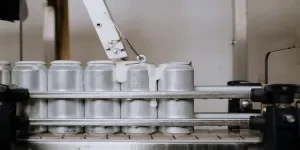Integrating AI with smart packaging is changing the landscape, enhancing sustainability, and streamlining operations.

In today’s fast-evolving marketplace, the integration of artificial intelligence (AI) and smart packaging is revolutionising how products interact with consumers, providing an enriched customer experience while ensuring sustainability and efficiency.
This shift is not only transforming traditional packaging but also paving the way for smarter, more connected consumer interactions.
Leveraging AI for personalised experiences
Artificial intelligence is significantly enhancing the personalisation of consumer experiences. By analysing vast amounts of data, AI can identify patterns and preferences, allowing brands to tailor their packaging and marketing efforts more effectively.
For instance, AI-driven A/B testing enables companies to determine which packaging designs resonate most with their target audience without the extensive manual effort previously required.
This method ensures that packaging not only attracts attention but also aligns with consumer expectations, fostering a deeper connection between the brand and its customers.
Additionally, AI can integrate seamlessly with smart packaging technologies such as QR codes and NFC tags, enabling consumers to access detailed product information, promotional content, and even interactive experiences via their smartphones.
These features enhance transparency and engagement, making it easier for consumers to make informed purchasing decisions and increasing brand loyalty.
Smart packaging technologies
The core of smart packaging lies in its ability to incorporate various technologies that enhance both product safety and customer satisfaction. Key technologies include:
1. Sensor-based packaging: This involves embedding sensors within packaging to monitor environmental conditions such as temperature, humidity, and pressure.
For instance, time-temperature indicators can alert consumers and retailers if a product has been exposed to conditions that could compromise its quality.
This is particularly crucial for perishable goods like food and pharmaceuticals, ensuring that they remain safe and effective throughout their lifecycle.
2. RFID and NFC tags: These technologies enable real-time tracking and authentication of products.
RFID tags are particularly useful in managing inventory and reducing losses due to theft or spoilage, while NFC tags provide consumers with instant access to product information and promotions by simply scanning the packaging with their smartphones.
Such interactive features not only improve the shopping experience but also build trust in the product’s authenticity and quality.
3. Active packaging: This type of packaging interacts with the product to extend its shelf life and maintain quality. Examples include oxygen scavengers that prevent oxidation and antimicrobial agents that inhibit microbial growth.
Active packaging is essential in the food industry to reduce waste and ensure that products remain fresh from production to consumption.
Sustainability and efficiency
One of the significant advantages of integrating AI with smart packaging is the potential for enhanced sustainability.
AI algorithms can optimise packaging designs to reduce material use and waste, as seen with Amazon’s PackOpt tool, which has significantly cut down on cardboard usage.
Moreover, smart packaging materials are often designed to be recyclable or biodegradable, aligning with growing consumer demand for eco-friendly products.
Smart packaging also contributes to more efficient supply chains. By providing real-time data on product location and condition, companies can improve logistics planning, reduce spoilage, and enhance overall supply chain transparency.
This not only reduces costs but also minimises the environmental impact associated with lost or damaged goods.
The future of consumer interaction
The future of packaging lies in its ability to connect consumers more intimately with the products they purchase.
Through AI and smart packaging, brands can offer a seamless, interactive, and personalised experience that meets the evolving demands of today’s consumers. As these technologies continue to advance, the potential for further innovation in customer engagement and sustainability within the packaging industry is immense.
In conclusion, AI and smart packaging are not just enhancing customer experience; they are redefining the very nature of consumer-product interaction.
By embracing these technologies, companies can ensure they remain competitive, sustainable, and in tune with the needs of their customers in an increasingly connected world.
Source from Packaging Gateway
Disclaimer: The information set forth above is provided by packaging-gateway.com independently of Alibaba.com. Alibaba.com makes no representation and warranties as to the quality and reliability of the seller and products. Alibaba.com expressly disclaims any liability for breaches pertaining to the copyright of content.




